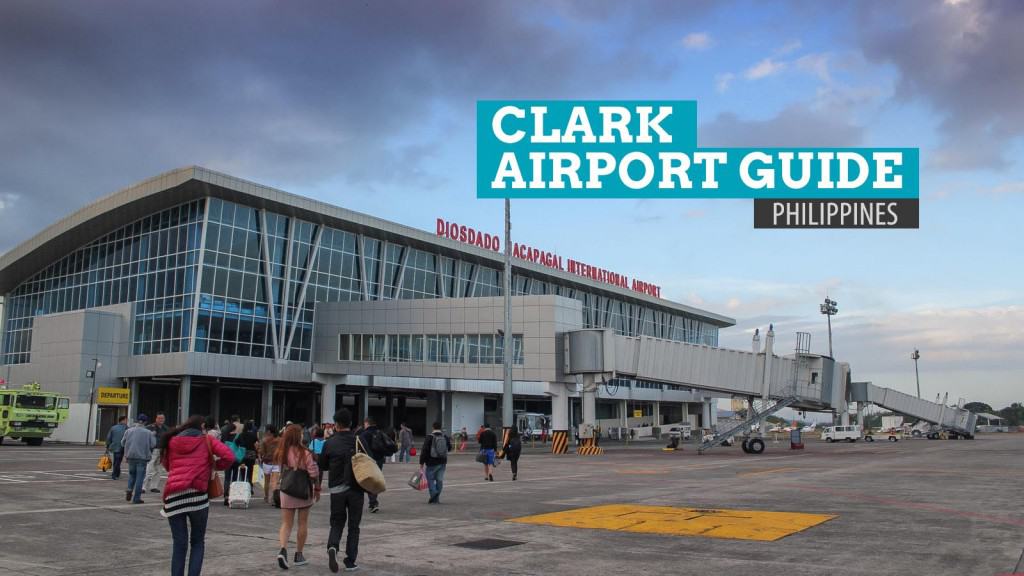Last updated: 15 April 2024
It’s not always that I fly out of Diosdado Macapagal International Airport, more popularly known as Clark Airport (CRK). Living in Metro Manila, I still prefer flights that take off and land at Ninoy Aquino International Airport (NAIA) because it is obviously more convenient to me. The air traffic congestion problem in Manila, however, pushed many airlines (PAL, Cebu Pacific Air, AirAsia, and more) to fly to and from Clark, making this Central Luzon gateway probably the fastest growing airport in the country.
HOW TO GET TO CLARK AIRPORT
Clark Airport is located two to three hours from Manila, depending on which part of the city you’re coming from. If you’re not very lucky, traffic can make the travel time even longer. Thus, to be on the safe side, I usually leave Manila six hours before my flight schedule — that gives me a four-hour allowance on the road and two hours to get through all the airport processes.
For example, if my flight is scheduled at 12 noon, I am already at the bus terminal at around 6am. I know that may be too much time but you know what they say, better safe than sorry. After all, it gives me ample time to come up with a Plan B should something unfortunate happen like the bus breaking down at the expressway or something.
Here are the timetables. We also added the schedule of P2P buses from BAGUIO, OLONGAPO, and DAGUPAN.
NAIA TO CLARK AIRPORT SCHEDULE
Fare: P400
TRINOMA TO CLARK AIRPORT SCHEDULE
Fare: P260
BAGUIO TO CLARK AIRPORT SCHEDULE
Fare: P630 (Joybus); P470 (Regular Aircon)
OLONGAPO TO CLARK AIRPORT SCHEDULE
Fare: P254
DAGUPAN TO CLARK AIRPORT SCHEDULE
FARE P331
What To Do Before an International Flight at Clark
If you’ve flown to a foreign destination before from NAIA, then you won’t have any problem going through the check-in process at Clark. It’s almost exactly the same. If anything, it’s much easier because the counters lie close to one another.
- Accomplish your e-Travel form. Don’t forget to save or “screencap” your QR code.
- Check in! Present your passport to the check-in agent and drop your bags for check in. The agent will give you your boarding pass.
- Pay the travel tax and terminal fee. Travel tax is P1,620 per person for economy class. Terminal fee is P600 per person. They will give you a receipt.
- Proceed to Immigration counters. Line up and clear Immigration check.
- Final security check. Remove all gadgets and metal items (including belts and coins) from your body. Remove your shoes, too.
After the final security check, head to the Pre-Departure Area. Check your boarding pass to see what gate you should go to. All you need to do now is wait for the boarding call.
Oh by the way, there is a Foreign Exchange (FOREX) Counter at the Check-in Hall. If you want to exchange currencies before your flight, do so before approaching the Immigration Booth. (There’s no turning back once you made it through. Trust me; I tried. Haha.)
There you have it! Have a safe journey!
Things to Bring
Like I said on this post, I always have a checklist of items I MUST NOT forget when I travel abroad. Here it is:
- Passport – Do not ever, ever forget your passport.
- Printed Flight Itinerary/Tickets – Make sure you print out the tickets. When I fly domestic, I usually just show the check-in agent the tickets on my phone. They accept it. But for international flights, you will be showing your tickets too many times (check-in counter, travel tax counter, departure fee counter, immigration, etc) that it would be impractical and ridiculously annoying to whip out your phone every step of the way. A printed ticket will make it a lot easier for you and the people who will check it. Besides, a piece of paper does not need to be charged.
- Valid IDs – Not really that important because the passport is considered a valid ID. But to be safe, I always bring other IDs, just in case I was invited by Immigration Officers for a short “talk.”
- DSWD Clearance – Only when I’m traveling with my nephew or niece and their parents are not joining the trip.
- Credit card – Some airlines require a copy of the credit card used when the tickets are booked online. You might also need it as a safety net in case you run short of cash. Some hotels also ask for credit card for deposit.
- Travel Itinerary – Make a clear plan of what you want to do and write them down. In case the Immigration Officers pick you for a random check, a printed itinerary will help convince them that you will really go to your destination to tour and nothing else.
- Hotel address and contact number – You will need it. If you’re traveling with a kid or someone who doesn’t speak English (or the language spoken in the country you’re visiting), give them the address and contact number of the place you are staying in. In case they get lost, it will be easier for them to find their way to you. You will also need the hotel address when filling out immigration forms.
- A Pen – Yes, the humble pen is important. You will be accomplishing forms.
How to Avoid Being Offloaded
Aside from the items above, there may be other documents that you need to prepare depending on your situation or background. We created a separate post for it.
✅ READ: HOW TO AVOID BEING OFFLOADED
Frequently Asked Questions
We answered some of the usual questions we get from our readers and made a separate post for them.
✅ VIEW FREQUENTLY ASKED QUESTIONS!
